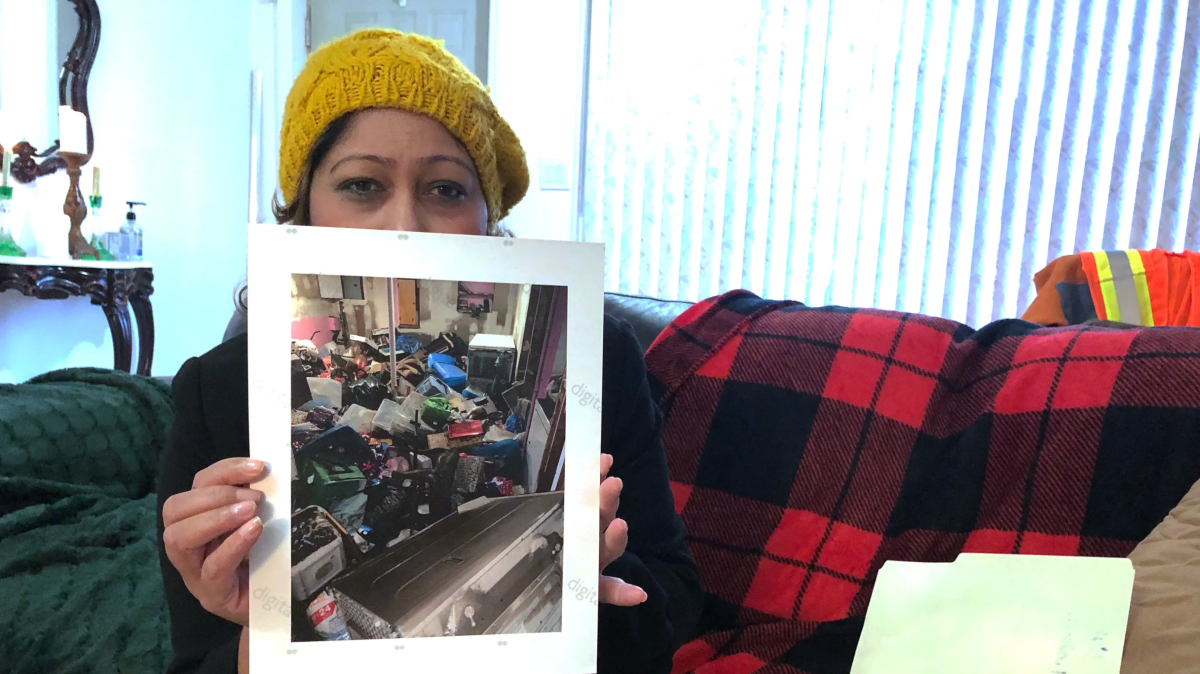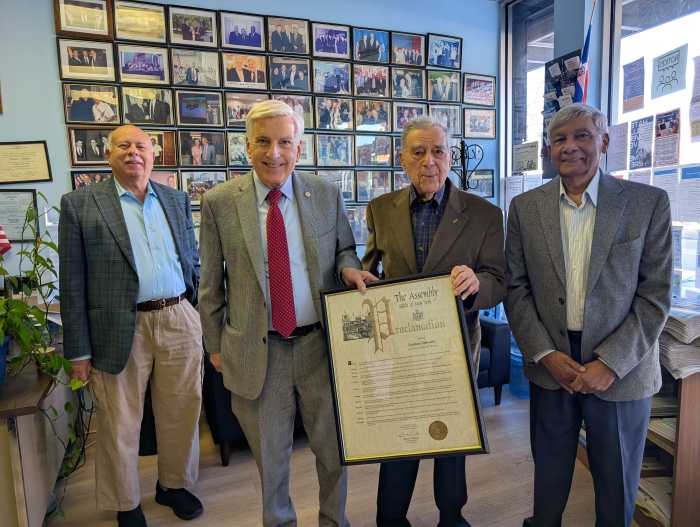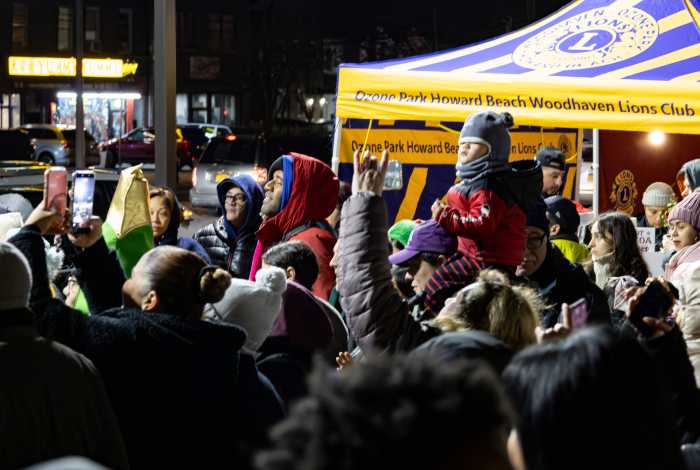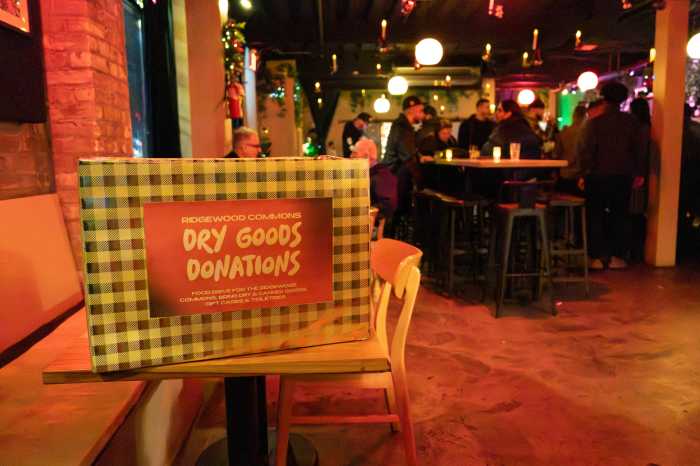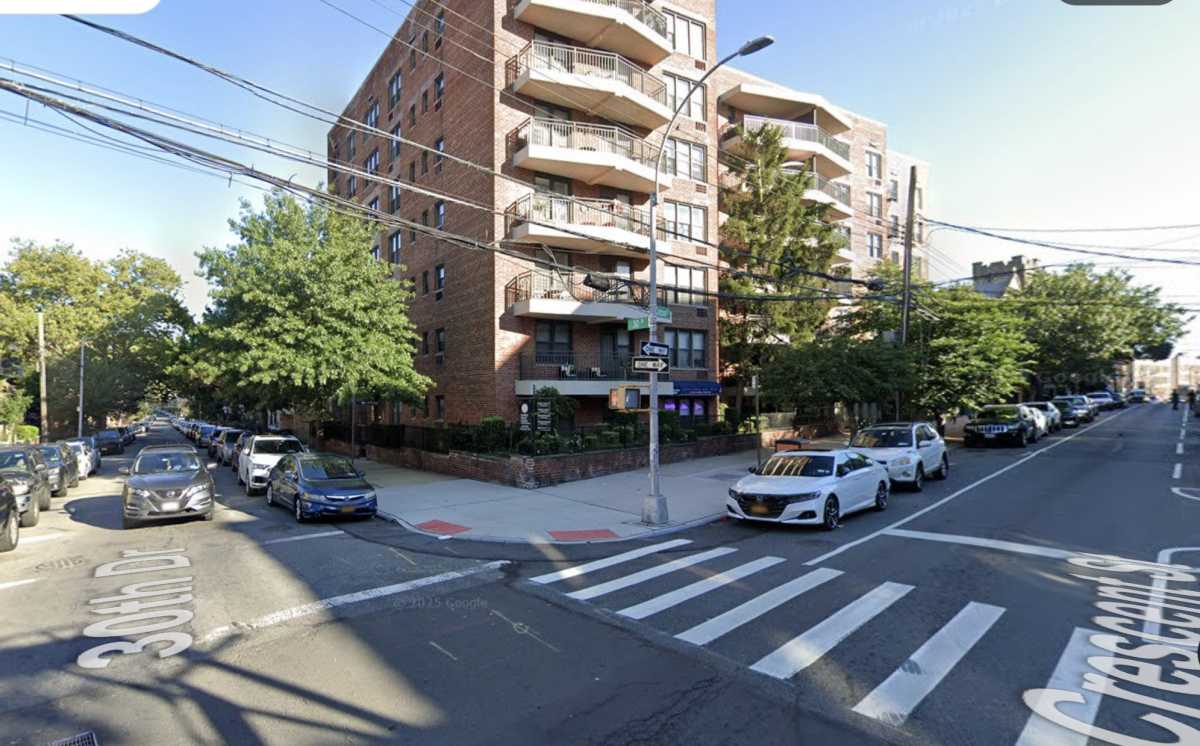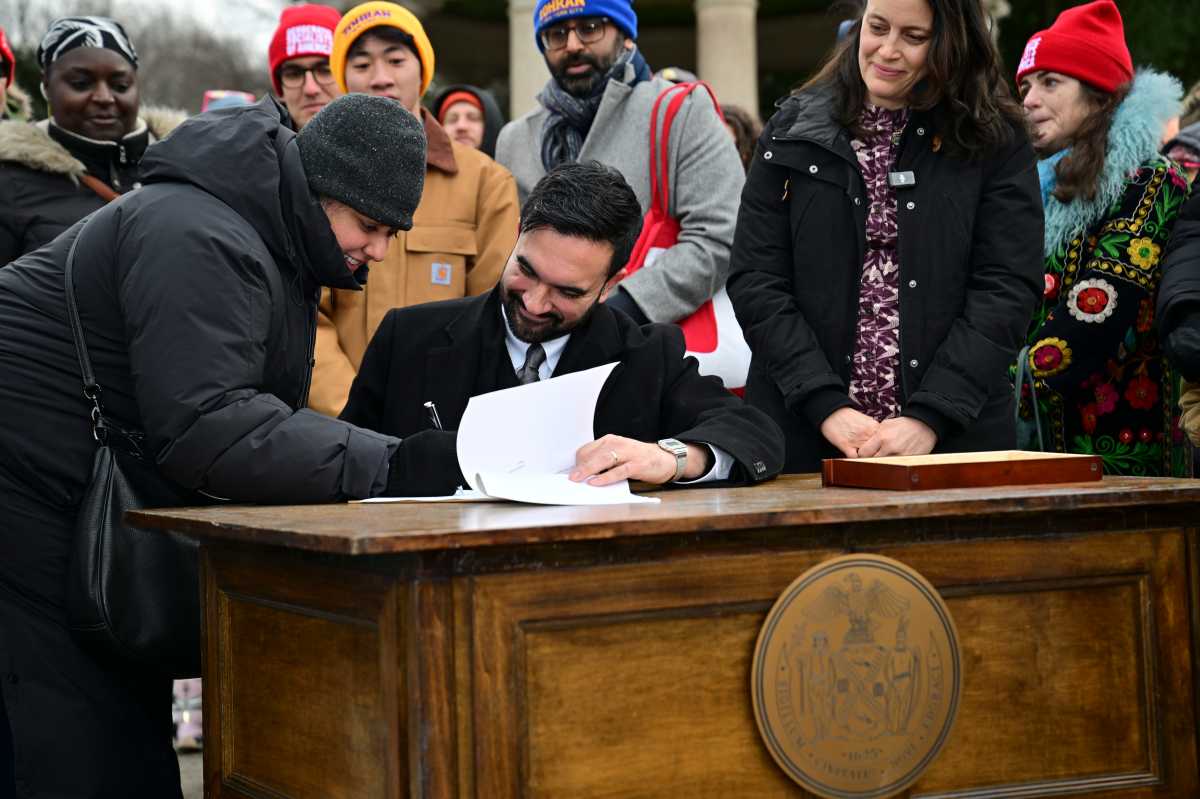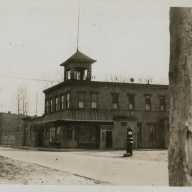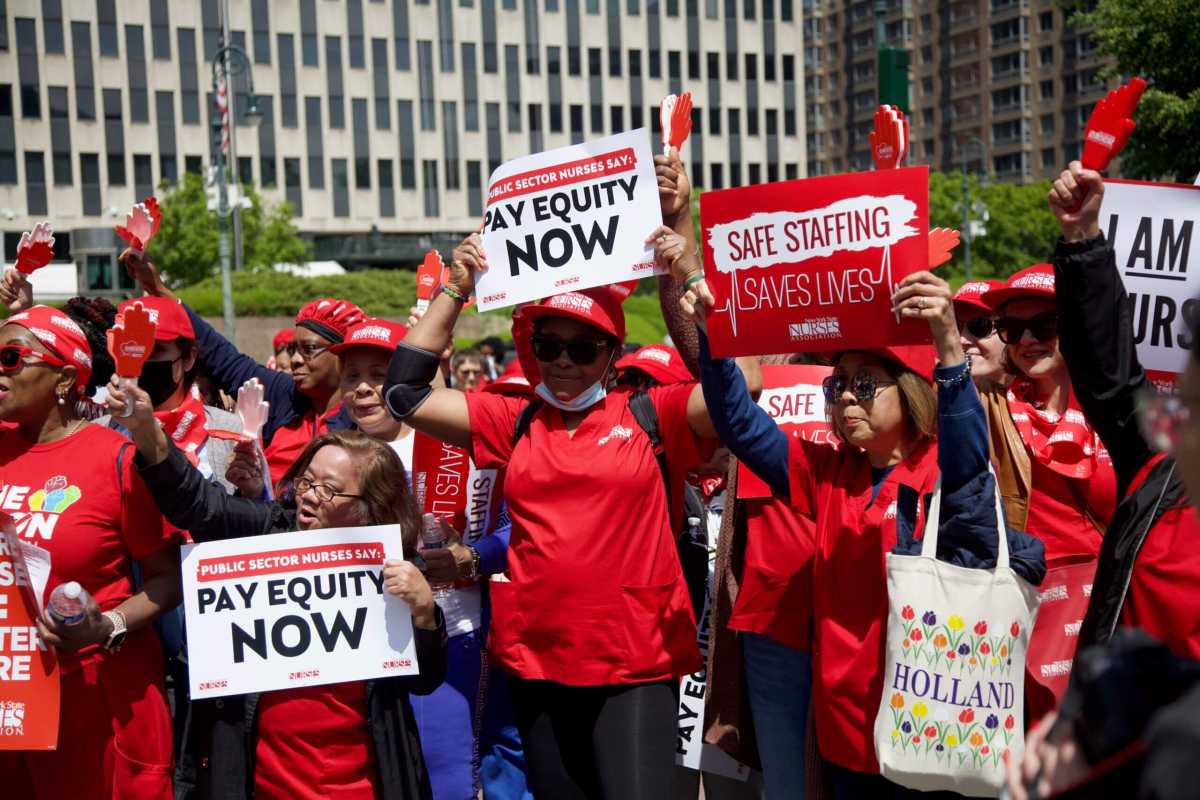This article was originally published on by THE CITY. Sign up here to get the latest stories from THE CITY delivered to you each morning.
Amrita Bhagwandin is between a rock and a cracked foundation.
Her home in low-lying Hollis flooded when remnants of Hurricane Ida pounded the city in early September. She counts herself as lucky that she received about $17,000 from FEMA — much more than most of her Queens neighbors.
Bhagwandin, 51, had several contractors come out to assess the damage, and none wanted to touch the severely compromised foundation. Instead, they advised her to fill the basement and lift the house, a project that would cost an estimated $300,000.
And that’s on top of what she’s already spent on repairs after repeated floods. She keeps a trove of manilla folders filled with photos of damage.
“I don’t understand what kind of life this is in New York City,” Bhagwandin said. “Do you know how scary it is? I run out of the house every time it rains. I cannot take a summer vacation because I have to stay and watch my house.”
Bhagwandin is one of many New Yorkers whose homes were damaged in the deadly Sept. 1 storm and who say they are still waiting for adequate assistance, more than three months later.
Renters and homeowners are facing different obstacles — and seek different types of relief. Bhagwandin wants the city to buy her home. Tenants, meanwhile, need their apartments renovated or a whole new place to live.
Yet storm victims on all sides say their ongoing shared experiences, including temporary displacement and long-term uncertainty, underscore a housing crisis exacerbated by climate change.
And despite recently extended state and federal timelines to apply for financial assistance, storm-slammed New Yorkers charge they’ve been largely forsaken.
“This is what’s very painful here, that we have to be chasing all these politicians to get this work done,” Bhagwandin said. “There’s no urgency.”
‘We Live Day to Day’
For renters, securing new housing in New York’s expensive market has been particularly difficult — especially in the wake of the storm, which killed 13 people, 11 of whom died in basement apartments.
Heidi Pashko and her husband have been living with their adult son and his two young children on Long Island ever since Ida hit. Their rented Forest Hills one-bedroom apartment — their home for more than 40 years — is still a wreck.
Pashko, 67, was used to paying “fabulous rent” for her spacious first-floor unit with high ceilings, but her hunt for furnished studios and one-bedrooms in Queens and Long Island has been discouraging. Nothing is as good as what she’d had — and everything costs at least double what she’d been paying.
 Hiram Alejandro Durán/ THE CITTY
Hiram Alejandro Durán/ THE CITTY“I feel bad sleeping on their couch, but I have nowhere to go,” Pashko said. “As long as my son will have me, I’m staying here. I’m with the grandkids every day, taking care of them.”
Pashko’s retirement from her job as a public school aide began the day of the storm, so money is tight. Before Ida, she’d just renovated the apartment and purchased a new stove and refrigerator.
“It’s hard,” she added. “I don’t know what my plans are. I don’t know what I’m doing. We live from day to day.”
Pashko said she and her husband received “a couple thousand dollars” from FEMA and are in the process of appealing to get more.
‘Emotionally, You’re Done’
As of Dec. 3, more than 88,700 people in New York City had applied for assistance from FEMA, with $163.7 million approved, according to Kevin Sur, an agency spokesperson. Sur declined to specify how many applicants were approved or denied funds.
Data FEMA provided to Reps. Alexandria Ocasio-Cortez (D-Queens, The Bronx) and Jamaal Bowman (D-The Bronx, Westchester) showed that about half of applicants in Queens and the Bronx received funding.
The two politicians sent a letter to FEMA late last month asking the agency to provide sufficient funds to help storm-battered New Yorkers “rebuild their homes and restore damaged property.”
 Samantha Maldonado/THE CITY
Samantha Maldonado/THE CITYApplicants can appeal FEMA’s decision within 60 days.
That’s what Tina Jimenez, 62 of East Elmhurst is doing. But it’s not easy.
“Emotionally, you’re done,” Jimenez said. “This added burden — you have to explain yourself and explain yourself and everybody’s giving you a different answer.”
FEMA gave her money for the costs of her boiler and water heater. Because she financed those repairs, Jimenez was able to use some of the federal funds to cover immediate expenses — “borrowing from Peter to pay Paul,” as she put it.
But she expects to be doing construction on her basement for the next few years to spread out the costs.
Days after the letter from Ocasio-Cortez and Bowman, FEMA extended the deadline to apply for financial assistance from Dec. 6 to Jan. 4.
That proved a relief for Randelle, a nurse who teaches at CUNY and didn’t want to give his last name.
The roof on his Bronx home sustained damage and his basement flooded. He’ll need to replace the roof and clean the basement to ensure there’s no black mold.
He showed up to FEMA’s mobile center in East Elmhurst on Saturday, hoping to get some help after his insurance company denied his claims.
“I just decided to try my luck,” he said, adding the representatives he spoke to were helpful and promised to send him more information so he could apply for funds to fix his Pelham Bay home.
‘It’s a Crisis’
On Sunday, Gov. Kathy Hochul extended the deadline by which people can apply to the $27 million Ida Relief Fund for undocumented New Yorkers excluded from FEMA assistance.
The new timeline will likely lead to more applications, according to Steve Mei, director of Brooklyn community services at the Chinese American Planning Council, one of six community-based organizations helping to administer the fund.
“Once people start receiving the relief money, that will encourage other folks to apply,” he said.
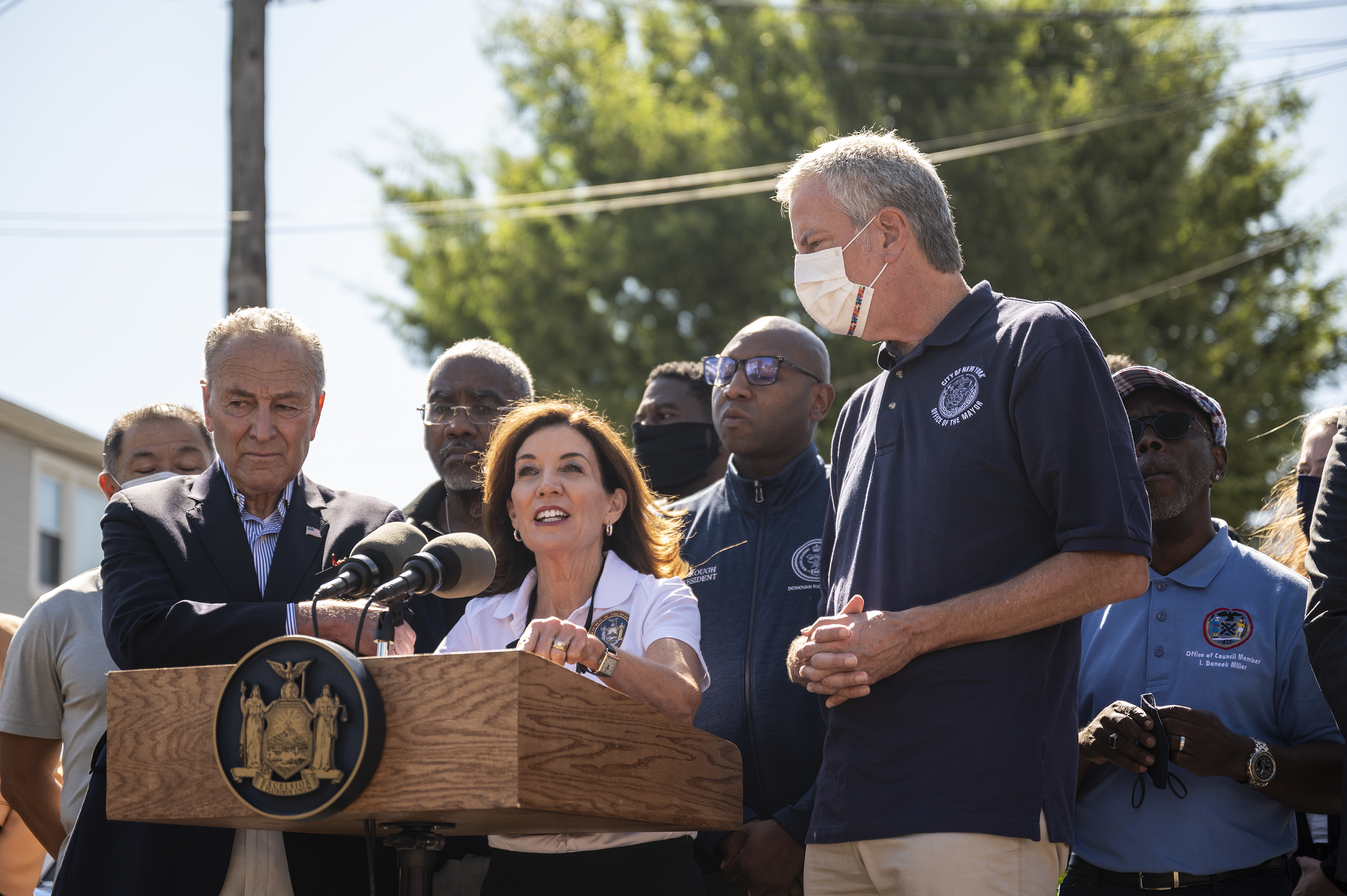 Hiram Alejandro Durán/THE CITY
Hiram Alejandro Durán/THE CITY
As of Monday, 432 households had applied to the fund, with 105 approved. The average payment is about $5,000, according Mercedes Padilla, a spokesperson for the state Office of New Americans.
Of the 105 applicants approved, 76 live in New York City. Just over $322,000 has been paid out.
“Folks have just lost everything essentially, and so this funding has been really essential to actually get them back on their feet, provide some basic assistance to help them meet their immediate needs,” said Becca Talzek, deputy director of Make the Road New York, a nonprofit that is also administering the fund.
But she noted that while some applicants were able to get enough funding to move out of their damaged apartments, others can’t if they don’t have enough money in hand. They are risking their health and safety as they wait for their landlords to make repairs to their homes, she added.
“Even though the grant is up to $72,000 per family, it’s really difficult to kind of get to that amount, because … most of the folks that qualify under this grant tend not to be homeowners,” Mei said.
He’s been referring people to the state’s Emergency Rental Assistance Program, but he believes increasing affordable and subsidized housing is key to help solve the problem.
“It’s a crisis, especially in the undocumented community, where employment and income levels are so low,” he said.
City Promises Help
In November, Mayor Bill de Blasio promised to “do everything” to get storm victims “some kind of permanent or long term affordable housing.” He further vowed to “support each family until they get to full resolution.”
The city “is currently evaluating all options to prevent long-term housing displacement and instability after Ida,” Lauren Bale, a de Blasio spokesperson, told THE CITY this week. “We are providing multi-pronged support to homeowners whose federal benefits have been insufficient to allow them to return home.”
Those efforts include helping homeowners with FEMA appeals and connecting displaced New Yorkers with services. Plus, de Blasio’s office is working to “find ways to supplement FEMA benefits” and “evaluating whether the city or other entities can fulfill unmet financial needs,” she said.
Meanwhile, other relief efforts are uncertain, including a buyout program the city asked Congress to fund.
The city is also awaiting guidance from federal agencies about how to use funds from the Ida Supplemental bill and Infrastructure Investment and Jobs Act passed by Congress this fall.
Queens Borough President Donovan Richards, who requested for a city-funded effort to repair homes in the style of the Superstorm Sandy-era “Build It Back” program, hasn’t heard back from the city, according to a spokesperson for his office.
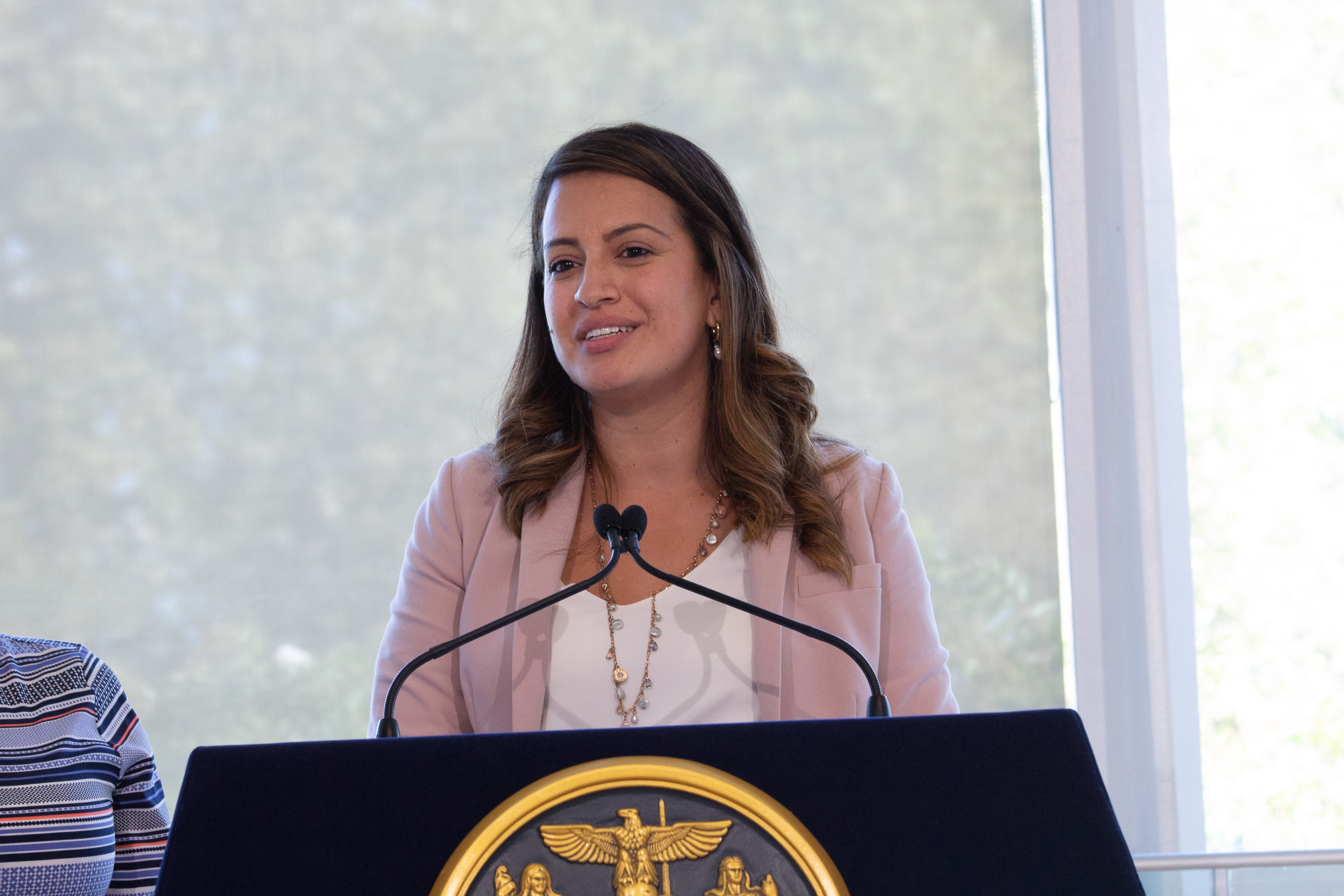 Ben Fractenberg/THE CITY
Ben Fractenberg/THE CITYAssemblymember Catalina Cruz (D-Queens), whose district includes Corona, Elmhurst and Jackson Heights, says the storm’s fallout shows that government at all levels must plan better for emergencies instead of merely reacting after disaster strikes.
“Our climate crisis is only going to get worse, so what are we going to do for the people who are living in our state, documented and undocumented?” she said. “What are we going to do that’s more consistent with planned prevention and have an actual system for emergencies?”
The city has accelerated plans to install catch basins in East Elmhurst. The basins are designed to catch rainwater and prevent flooding from overtaxed drainage systems. Jimenez said the basins are working so far — normally, she said, any rain would result in soggy basements.
“We’re very excited about that going forward,” she said. “Hurricane Ida, no one can prevent, but regular rain shouldn’t send us into a panic where our basements have water.”
‘What’s the Future?’
In Hollis, Bhagwandin isn’t sure new basins would do her neighborhood much good.
She’s paid thousands of dollars to replace her boiler and to put metal jacks in her basement to support a beam holding up her house. She also has to re-do the home’s plumbing and replace her washer and dryer, not to mention various personal items.
Ultimately, she wants to move somewhere that won’t flood — or worry about new owners who’d have to deal with the threat of flooding.
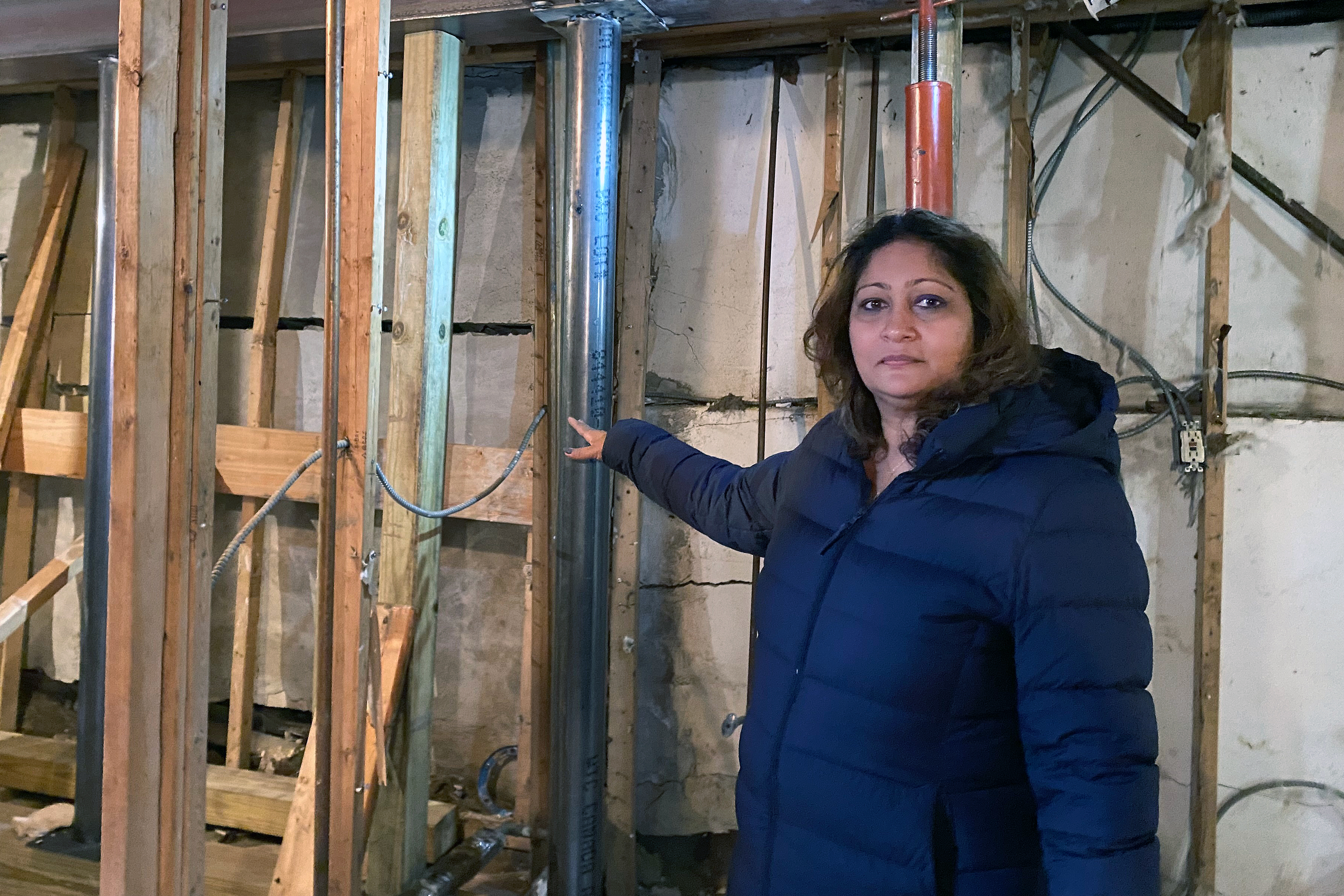 Christopher Alvarez/THE CITY
Christopher Alvarez/THE CITY
She’s not sure where she’d go. In the meantime, she’ll need to find a place to rent for her and her family while her home is under construction.
As Bhagwandin figures out what to do, she’s experiencing nightmares and migraines as she worries about financial fallout and the possibility of more floods.
“What’s the future for this neighborhood?” she asked.
THE CITY is an independent, nonprofit news outlet dedicated to hard-hitting reporting that serves the people of New York.

